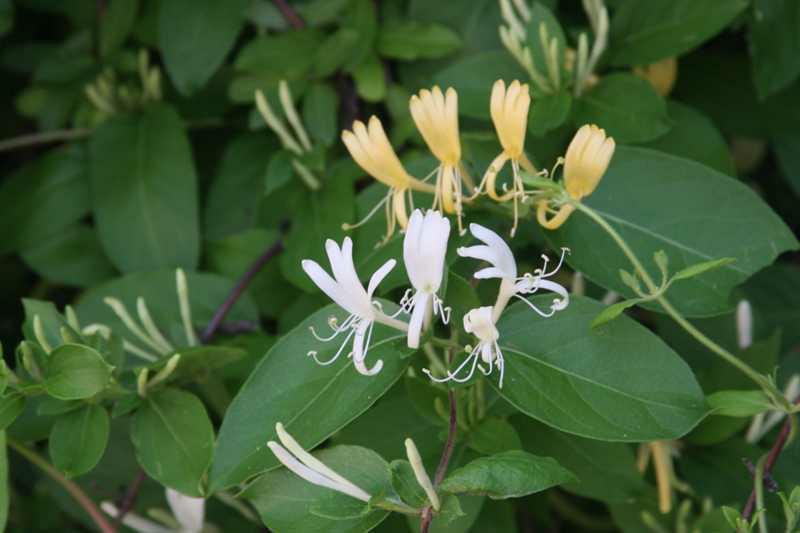Japanese honeysuckle (Lonicera japonica ‘Halliana’)
Japanese honeysuckle
Lonicera japonica is a vigorous, deciduous, twining vine which typically grows 15-30′. Extremely fragrant, slender, tubular, two-lipped, pure white flowers age to light yellow. Flowers appear from May to frost and give way to black berries which mature in late summer to fall. Attractive oval, dark green foliage. Perhaps the most popular of the honeysuckles that are used as ground covers.
Genus name honors Adam Lonitzer (1528-158- , German botanist, the author of an herbal (Kreuterbuch) many times reprinted between 1557 and 178
Specific epithet means of Japan.
‘Halliana’, commonly called Hall’s honeysuckle, is a commonly seen cultivar.

Easily grown in average, dry to medium, well-drained soil in full sun to part shade. Tolerates drought. Decreased flowering occurs as amount of shade increases. Adapts to wide range of soils. Prefers moist, loamy soils. When used as a ground cover, 2-3 plants per square yard should be sufficient, and plants may be cut back hard (i.e., sheared close to the ground with an elevated lawn mower) in late winter to control growth and to remove dead undergrowth.
| Hardiness zone | 4 - 9 |
| Sun light | Full sun to part shade |
| Water | Dry to medium |
| Maintenance | Medium |
No serious insect or disease problems. This vine can be quite invasive, and can rapidly cover and literally suffocate shrubs or small trees if allowed to climb on them.
Not recommended. It is a dreadful weed.
| Common name | Japanese honeysuckle |
| Botanical name | Lonicera japonica 'Halliana' |
| Plant type | Vine |
| Family | Caprifoliaceae |
| Hardiness zone | 4 - 9 |
| Water | Dry to medium |
| Maintenance | Medium |
| Flower color | White maturing to yellow |
| Flowering period | June - Oc- ber |
| Height | 15 - 30 ft. |
| Width | 3 - 6 ft. |